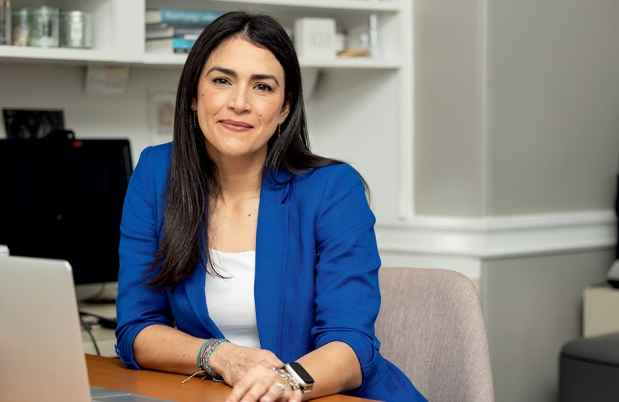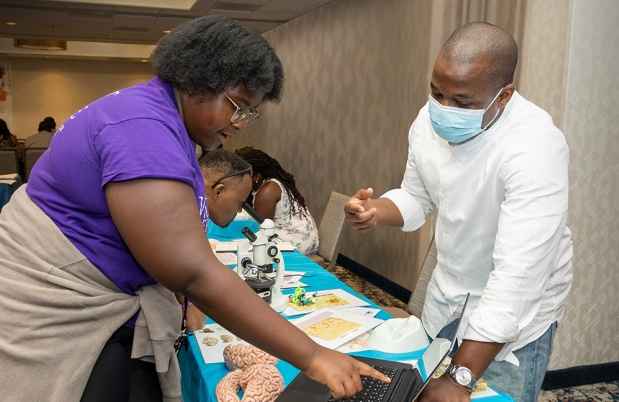On October 26, 2022, McLean Hospital, in collaboration with Stanford University Department of Psychiatry and Behavioral Sciences, hosted the second annual Suicide-Focused Assessment and Treatment Course.
The event featured 11 lectures by leading experts in the field of suicidology. Topics included assessment, treatment, and how suicide affects populations including adolescents, LGBTQ+ individuals, and people with substance use disorders.
The event was attended live by thousands of participants around the world and is now available to watch on demand.
Although the course was originally intended as an update for mental health clinicians, it is applicable to everyone.
In his welcome remarks, Scott J. O’Brien, director of Education Outreach for McLean, stated it is crucial for everyone to be comfortable discussing suicide and understanding those who may be at risk.
“We have to admit that providers alone cannot solely be held responsible for helping to stop suicide,” O’Brien said.
Course directors Douglas G. Jacobs, MD, Stop a Suicide Today, and Alan F. Schatzberg, MD, Stanford University School of Medicine, both spoke of their own experiences with suicide as physicians and researchers.
“The purpose is to acknowledge that the clinical phenomenon of suicide impacts every clinician, regardless of the setting they practice in, theoretical biologic approach, or level of experience,” Jacobs stated.
“It really affects so many of us—not only patients and families, but treaters,” Schatzberg added. “What I’ve been very concerned about, particularly being a chair for almost two decades, was the effect on trainees, residents, and psych interns when they lose a patient.”
Available On Demand
Did you miss the live event? You can watch the course at any time, on demand.

Current Status of Suicide Assessment and Treatment
The course offered several viewpoints on suicide.
In his overview of adolescent suicide, David A. Brent, MD, University of Pittsburgh, explained why young people should be screened for suicide risk. He described techniques clinicians can use to assess such risk.
“It’s important to emphasize that asking about suicidal thoughts absolutely does not increase the risk for suicidal behavior. So, there’s no reason not to do it,” Brent stated.
Srijan Sen, MD, PhD, University of Michigan, talked about understanding depression and suicidality in physicians. “The focus on well-being among physicians has grown dramatically in the last few years,” he said.
Sen described how a person’s mental health can change during internship and why the medical field should expand the discussion of burnout.
Rajeev Ramchand, PhD, RAND Corporation, discussed challenges in conducting suicide research in LGBTQ+ populations. He described two empirical papers he and his colleagues wrote about suicide in lesbian, gay, and bisexual adults.
“The stigma of prejudice and discrimination of LGBT individuals may exacerbate the risk of mental health problems thereby increasing suicide practices,” Ramchand stated.
In presenting on substance use disorders and suicide, Hilary S. Connery, MD, PhD, McLean Hospital, emphasized the importance of integrating treatment for substance use disorders with that for other mental health conditions. She also described the elevated suicide risk of people who struggle with addiction.
“Substance use disorder and substance intoxication are significantly associated with impulsive behavior, which is a major risk factor for suicidal behavior,” Connery explained. “Substance use disorder has high rates of depressive disorders and grief, each of which can elevate suicide risk.”
Carolyn Rodriguez, MD, PhD, Stanford University School of Medicine, discussed the roles perseveratory thoughts have in suicidal behavior and how researchers are investigating biomarkers as a means of suicide prevention.
Rodriguez emphasized the possibilities of the findings, including those beyond prevention.
“There’s a whole suite of biomarkers,” she says. “If we could identify a risk prediction biomarker, could it also be used to look at therapeutic monitoring?”
David Jobes, PhD, Catholic University of America, described various tools for assessing and treating suicidal patients, including the collaborative assessment and management of suicidality (CAMS) model he developed with colleagues.
“In-depth assessment of suicidal risk should be empathetic, collaborative, and endeavor to take the patient’s perspective on how and why suicide is compelling to them,” Jobes said.
Get access to this online resource: Current Status of Suicide-Focused Assessment and Treatment
Looking at the role of pharmaceuticals in prevention, Ross J. Baldessarini, MD, McLean Hospital, discussed why the role of medications in preventing suicide is complex.
According to Baldessarini, “Biomedical approaches to therapeutics aimed at suicide prevention have been a difficult area for academic pursuit and have only been taken seriously for the past decade.” Baldessarini also discussed new treatments that are on the horizon.
Blaise Aguirre, MD, McLean Hospital, described the application of dialectical behavior therapy. From a clinical perspective, he explained how DBT is a powerful tool in reducing suicidality in adolescents.
“If you keep chasing symptoms, it’s going to be a very long therapy,” Aguirre said. “So, the idea in dialectical behavior therapy is to target the suicidality first and foremost. Yes, you might want to talk about rejection and other concerns, but clinicians have to reduce suicidality and self-injury.”
In his talk, Matthew Nock, PhD, Harvard University, explained why we haven’t seen the same drop in mortality rate for suicide as we have for other health issues. Nock stated that research on suicide has repeatedly looked at the same risk factors and studies have largely been conducted with self-report surveys and interviews.
“If we’re using the same methods, we shouldn’t be surprised to be seeing the same results,” Nock says. “We need new technologies.”
Nolan Williams, MD, Stanford University School of Medicine, presented on using repetitive transcranial magnetic stimulation (rTMS) for suicide prevention. The technology offers the possibility of rapidly treating suicidal patients.
“We’re transitioning into a period of time in which the expectation is that we’re going to be treating folks in a manner of days instead of weeks or months,” Williams stated.
The course concluded with a special presentation from guest Justin L. Bullock, MD, MPH, University of Washington School of Medicine. Bullock had a conversation with Jacobs, Schatzberg, and the audience about his lived experience with suicidality, as well as his identity as a gay, Black physician who struggles with bipolar disorder.
“There’s so much stigma, even within the medical field,” he says. “People are afraid to get help.”
“Mental illness is challenging enough as it is. We shouldn’t have these additional structural barriers that prevent people from getting the care that they need.”
Bullock shared that his struggles with mental health have helped him become a more empathic physician.
“I feel very strongly that my bipolar disorder makes me a better clinician. I know it helps me resonate with patients,” he said.
Media Requests
Journalist or member of the media? We are available 24/7 for media requests.



